The 8 Best Gravel Bike Wheelsets in 2020
Ever since gravel riding became a thing recently, wheelsets manufacturers such as the Zipp’s, Enve’s, and even Shimano are jumping head straight into this upcoming discipline.
That’s because one of the first things many cyclists upgrade on their gravel bike is to get a new wheelset. Besides the bike frame itself, the wheels are where the most performance gain can be obtained.
So if you’re looking for a new gravel wheelset, you’ll surely come across these in your mind.
- Should you stick with 700c or join the 650b bandwagon?
- What’s the ideal width of the rims?
- Centerlock or 6-bolt?
- Carbon or alloy?
I’ll cover all these on this page and share with you some of the popular wheelsets among gravel cyclists today.
Our Favorite Picks
Enve G23
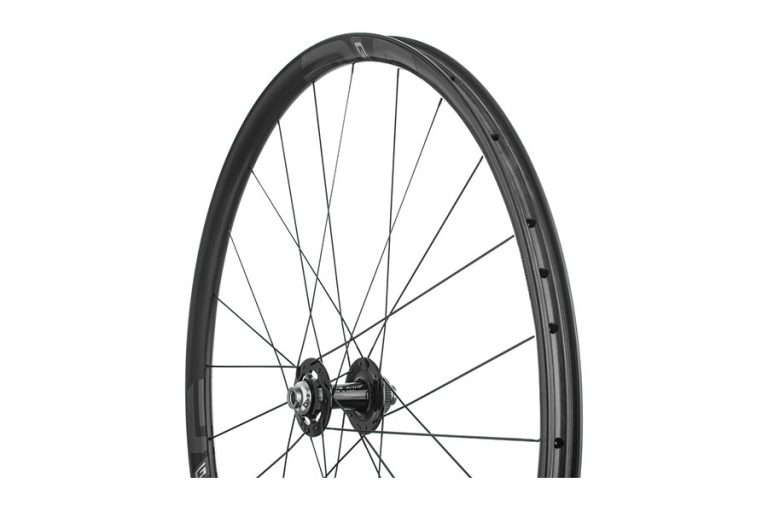
It wasn’t that long ago when people struggled to wrap their heads around the idea of a carbon fiber frame, much less carbon fiber wheelsets.
Enve G23 debuts a set of carbon fiber rims with its first foray into the gravel bike market that can handle the rigors of gravel. Tasked with creating a wheelset that’s both lightweight and strong for pro-level racing, Enve has nailed it.
Learning from past errors, the G23 features a wider bead that improves tire durability while preventing punctures during bottom outs when running at low pressure (a problem with some of its MTB rims).
As with all Enve rims, the G23 features molded spoke and valve holes and nipple seats, preserving strength by not cutting into the carbon fibers, shaving off weight.
- Pros : Lightweight and Chris King R45 hubs are smooth and very responsive.
- Cons : Expensive.
Industry Nine Ultralite CX235
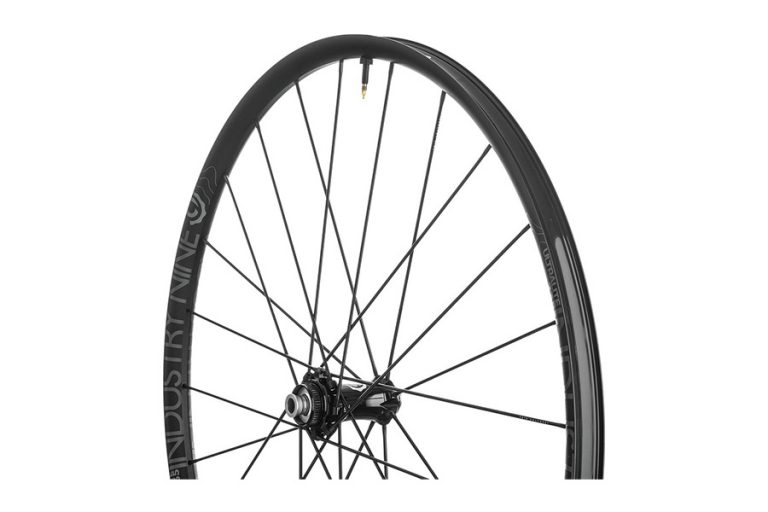
As gravel bikes have trended upward, demand for gravel performance wheelsets has taken off, resulting in a bevy of high-end 650bs. The Industry Nine Ultralite wheelset is one of them.
It takes advantage of the smaller rim size to go with wider rims. It has an internal rim width of 23.5 mm, making it an excellent base for beefier off-road tires ranging in size from 33 to 55 mm.
Although critics of the gravel bike fad may be tempted to call the new crop of 650bs rebranded 27.5” MTB rims, it’s clear with the CX 235s that’s not the case. Whereas MTB rims are chunky to handle the abuse of singletrack trail riding, Industry Nine’s svelt rims look more like wheels, you would find on a road bike.
Indeed they are ultralight, weighing just 1,320g. These are wheels optimized for maximum performance on lighter offroad terrain.
- Pros : Lightweight and exceptional build quality.
- Cons : Harsh ride especially for lighter riders.
Reynolds ATR 650B
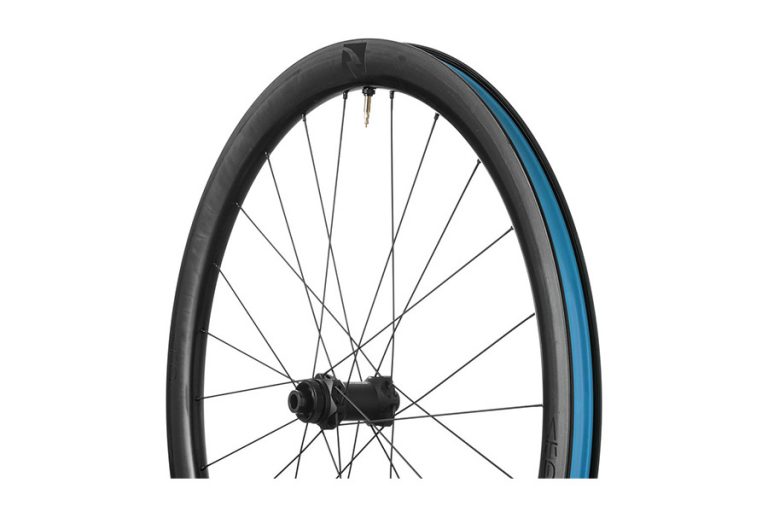
Reynolds brings a durable yet lightweight 650b carbon wheelset to the gravel market with its ATR 650s.
In keeping with the increased demand for drop-bar bikes that can go off-pavement, the ATR 650s feature a 650b size coupled with extra-wide rims, increasing frame clearance while creating a solid base for bigger tires. Their internal measurement is 23 mm, with an external width of 32 mm. Larger tires mean better traction and more shock absorption over gravel terrain.
The 40 mm rim depth strengthens the rims while aiding aerodynamics and adding stiffness. These wheels also roll well with hubs that engage quickly. Reynolds designed the ATR 650’s hub to fit with newer centerlock disc brakes.
- Pros : Excellent value for a 650b wheelset.
- Cons : Heavy for a carbon wheelset.
Zipp 303 650b Firecrest
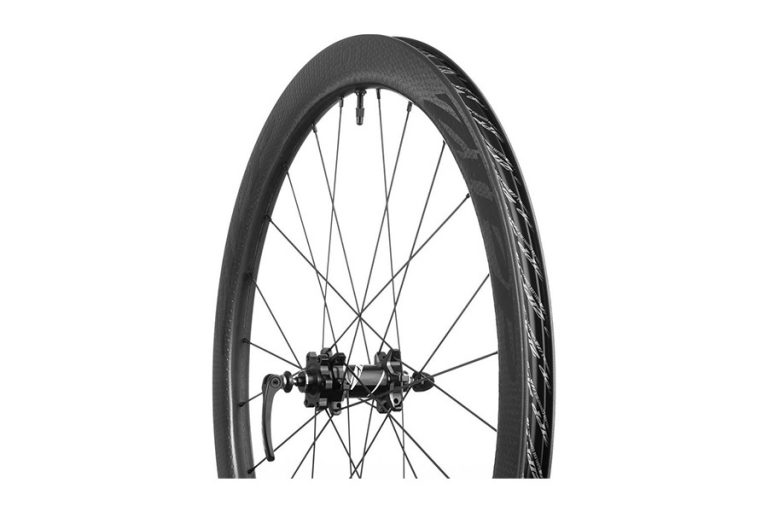
Zipp continues to up the ante for what a gravel bike wheelset is with its launch of the 650b version of its 303 Firecrest line of carbon wheelsets. At first look, this wheelset appears to be some strange hybrid between mountain bike rim and high-end racing road rim.
It features the all-carbon design of the best Zipp wheelset right down to the clusters of aerodynamic dimples that circle the rim. And while the aerodynamic tech may seem like overkill on a wheelset made for a bike meant to take on deer trails and fire roads, it does show just how serious the gravel bike discipline has become.
With its 650b size and extra-wide rims, the Zipp 303s are compatible with massive tires suited to take on rocks, roots, and gravel. Other offroad-friendly features include 6-bolt disc brake compatibility, quick-release thru-axles, and tubeless-ready rims.
- Pros : Lightweight, smooth, and excellent warranty coverage.
- Cons : Be prepared to pay more.
Mavic Allroad Pro Carbon SL
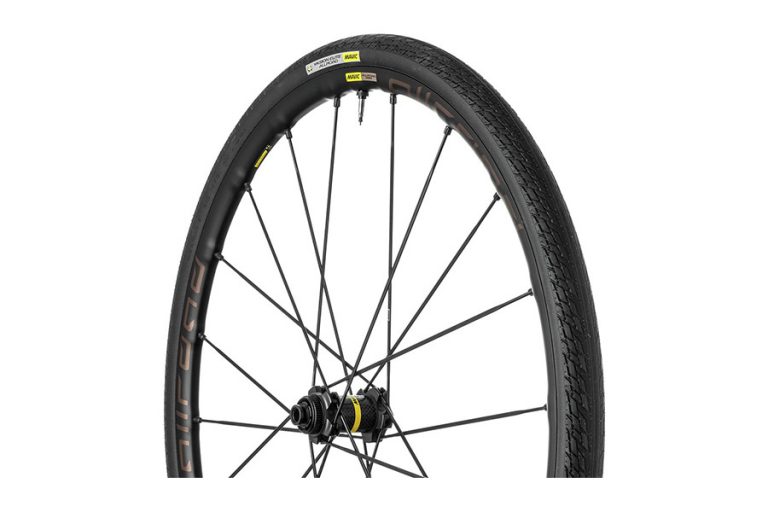
If you’ve ever struggled to mount tubeless tires on wheels made by a different manufacturer, then you’re going to appreciate Mavic’s Allroad Pro Disc wheel.
The coolest thing about this tubeless wheelset is that you can mount tires with a standard floor pump. Tires and wheelsets made by different manufacturers may list the same wheel size, but many are slightly different in reality. This makes installation difficult, if not sometimes impossible.
As manufacturers of both, Mavic designs its wheels and tires to fit perfectly together, making install relatively easy. Tire options for the Allroad Pro include the 30, 35, or 40mm Tksion Allroad UST Tires, which offer plenty of traction, shock absorption, and puncture protection.
Combine that with its 22mm internal rim width, and the Allroad Pro makes for a plush ride. The Allroad Pros are compatible with center lock disc brakes.
- Pros : Tough, durable, and affordably priced.
- Cons : Heavy and sluggish acceleration.
Shimano GRX RX570
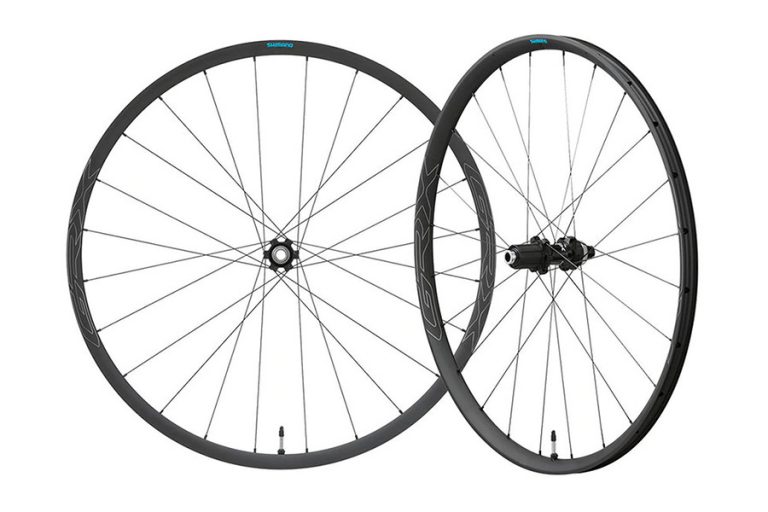
While Shimano’s GRX RX570’s may not have the flashy carbon rims of other wheelsets on this list, this wheelset does offer excellent performance at a much more digestible price than other higher-performing models.
This wheelset includes a sturdy yet relatively lightweight design that makes the RX570s effective on everything from paved surfaces to rough fire roads to smooth singletrack. And while the aluminum body makes for a much bumpier ride than carbon rims, the low-pressure wider tires that you’ll be mounting on them will handle plenty of the shock absorption duties.
Shimano’s GRX hubs offer smooth roll and little lag in wheel engagement. While these wheels may not have the performance level of other wheelsets on this list, they’re a great value option given the significantly lower price point.
- Pros : Excellent value with a good overall construction.
- Cons : Heavy.
Santa Cruz Reserve 25
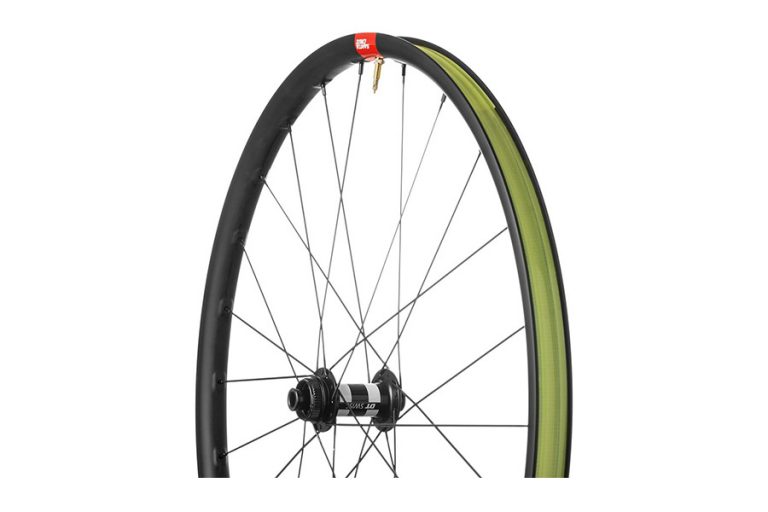
A few years ago, Santa Cruz launched its reserve line of carbon mountain bike wheels to great success. Since then, MTB riders have continually sung the praises of the Reserve line’s strength-to-weight ratio, not to mention the anxiety-reducing lifetime warranty that comes with its wheelsets.
So, it only makes sense that Santa Cruz would expand its Reserve line to include the fast-growing gravel bike market. Santa Cruz goes for strength by using a carbon layup similar in design to the wheelsets pros use in the cobble-laden spring classics.
At 25mm internal width, the rims are wide enough to support tires ranging from 40 to 55mm wide. And, with hookless rims, these wheels are ready for tubeless tires.
If you’re still nervous about spending so much on a wheelset that will take a beating, know that the Reserve 25s also come with a lifetime warranty.
- Pros : 25mm internal rim width allows for low pressure, hence a comfier ride.
- Cons : Expensive.
Hunt 35 Carbon Gravel
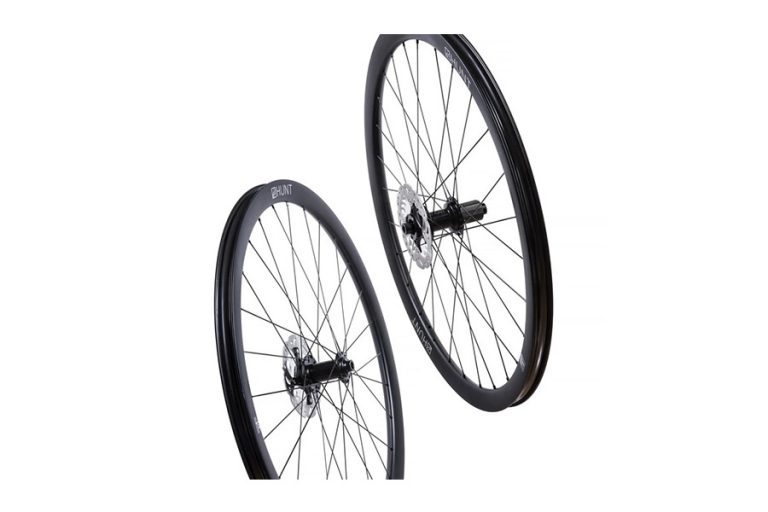
Lightweight and wide, the Hunt 35 offers an excellent rim to meet serious gravel riders’ demands.
With its 35 wheelsets, Hunt takes the rim width to the next level at a whopping 23mm internal width. This substantial base allows for some extensive tires. Understanding the perils of gravel riding, Hunt put extra emphasis on durability with the 35 Gravels.
For example, the hub features a ceramic coating designed to protect against sprocket damage, a common issue with gravel bikes. Hunt also uses high-quality bearings, giving it an impressively smooth roll.
The carbon rim design Hunt uses also does a fantastic job of producing a strong rim while cutting weight. The wheelset weighs in at just 1548g. Hunt also makes your install easier by including a wide variety of axel sizes for your current and future gravel bike.
- Pros : Good value for money with a high-quality overall built.
- Cons : Long waiting time.
Gravel Wheels Buying Guide
Shopping for the right wheelset for your gravel bike needs can be a pretty confusing process. Gravel riding is new enough that many wheelset brands are only just now bringing them to market.
Here are 5 things to know before buying your next gravel bike wheelset.
650b vs. 700c Wheels
It’s only recently that gravel riders have had options when it comes to wheel size.
Having their roots in drop bar road bikes, gravel bikes began with the traditional road bike configuration of 700c wheels. And while 700c size may still be preferable for some gravel bikes, many riders enjoy the benefits 650b wheels offer.
Let’s take a closer look at the differences between 650b vs. 700c wheels.
650b Wheelsets
650b wheelsets such as the Shimano GRX RX570 and Santa Cruz Reserve 25, measure about 584mm in diameter while a 700c wheel, such as the ENVE G23, measures 622mm.
That leaves a significant amount of space (38mm to be exact) for more rubber. 650b wheels can handle tires from 40mm up to 2.1″ or more.
650b rims are also wider, allowing them to add comfort and traction due to greater air volume and a larger overall footprint. Other benefits of 650b wheels include snappier acceleration and better traction.
700c Wheelsets
700c wheels, in comparison, perform better on hardpacked surfaces.
This is because they have lower rolling resistance and hence a much faster roll than wider 650b tires. 700c tire and wheel combinations have less resistance and better rollover, which means 700c wheels will maintain momentum longer and more efficiently.
With these qualities in mind, 700c wheels work better for smoother hardpacked gravel surfaces while 650b better suits gravel riders who plan to take their bikes onto tight singletrack from time to time.
Centerlock (AFS) vs. 6 Bolt Disc Brake Rotors
Since gravel bike manufacturers design their bikes for rugged offroad terrain, disc brakes are the standard.
When it comes to disc brakes, you have two options for the rotors;
- Centerlock (AFS)
- 6-bolts
The two differ in how they attach to the wheels. The traditional 6-bolts style attaches using six bolts, while centerlock rotors connect to the hub with a lockring. Both do an excellent job of holding your brake rotors to the wheel, but centerlock rotors offer the best performance.
Most high-end models such as the Reynolds ATR 650 and Mavic Allroad Pro, feature centerlock mounts. It’s simply easier to mess up 6-bolts rotors. Incorrectly tightening the bolts can cause the rotor to warp, causing alignment issues with the calipers.
6-bolt rotors can also be installed off-center, also creating problems with caliper alignment. And, given their design, they also take more time to install and uninstall.
With only one bolt to work with, centerlock rotors are much easier to install and don’t have the installation hazards that 6-bolts rotors do.
In addition to upgrades in disc brake technology, gravel wheelsets have also embraced thru axles over quick release.
There are a few reasons for this switch. First of all, thru-axles feature thicker axles, which offer more stiffness, better performance, and better durability for off-road terrain at a negligible weight increase.
You can avoid the inconsistencies in brake alignment inherent with QR axles when installing the wheel with thru-axles. Finally, thru-axles eliminate the chance that a wheel may accidentally pop pout.
Front thru-axles for gravel bikes follow one standard; 12x100mm, the first number referring to the axle’s width, and the second to the dropout width.
Rear axles, meanwhile, are usually 12x142mm for gravel bikes.
Read More :
Tubeless Rims
Virtually all the gravel rims you’ll find are tubeless tires compatible. This includes the Zipp 303 650b Firecrest and Reynolds ATR 650, among others. This is for several reasons.
First and foremost, tubeless rims offer better puncture protection. When combined with a sealant, if a tubeless tire is punctured, it will automatically seal, using the tire’s rotational forces with the sealant inside the tube to fix it, eliminating the need for time-consuming roadside tube changes.
You can also run tubeless tires at much lower air pressure than tubes. Tires run at a low PSI will better absorb the road bumps, making for a more comfortable ride. This is particularly important with gravel bikes since they lack the suspensions that mountain bikes have.
That’s not to say that tubeless tires don’t have their downsides.
Tire sealant must be applied to give the tire its puncture-resistant qualities. They are also notoriously hard to install, with most requiring significant effort to get them on the rim.
Tubeless tires require the power of either a high-volume floor pump or air compressor to sit on the rim, which involves the costly purchase of a special pump. Add to that the fact that using a high air volume bike pump can be a nerve-wracking experience.
Wide and Shallow Rims
Gravel bike wheelsets are significantly wider than road bike rims.
Whereas a road bike might have an internal width of between 15mm and 17mm, a gravel rim width will range from 17mm to 23mm wide. This added width allows for larger tires with more air volume and hence more shock absorption.
You also won’t find the deep rims on gravel bikes as aerodynamics are not crucial with gravel riding. As such, rim depths typically range from 20mm to 40mm deep.
Whereas deeper rims on road bikes add to aerodynamics, deeper rims add strength and rigidity with gravel bikes.
The Enve G23 wheelset, for example, features a depth of 23mm while the Reynolds ATR is 40mm. Zipp’s 303 650b Firecrest is an exception at 45mm.
Rear Freehub Compatibility
The hub is the center part of the rear wheel that holds the cog set. When purchasing a new wheelset, you must make sure it’s compatible with your existing drivetrain as only certain hub styles will fit certain cog sets.
Shimano and SRAM 10 and 11-speed hubs are compatible with the HyperGlide (HG) rear hubs. If you have a 12-speed SRAM, you’ll need to find a wheelset that uses an SRAM XDR hub.
